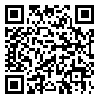Volume 4, Issue 4 (2024)
jpt 2024, 4(4): 369-386 |
Back to browse issues page
Download citation:
BibTeX | RIS | EndNote | Medlars | ProCite | Reference Manager | RefWorks
Send citation to:



BibTeX | RIS | EndNote | Medlars | ProCite | Reference Manager | RefWorks
Send citation to:
Karkon Beiraq H. Philosophical Explanation of the Implication of Near-Death Experiences on the Immateriality of the Soul. jpt 2024; 4 (4) :369-386
URL: http://jpt.modares.ac.ir/article-34-78392-en.html
URL: http://jpt.modares.ac.ir/article-34-78392-en.html
Department of Islamic Education and Training, Farhangian University, Tehran, Iran
Abstract: (1429 Views)
This article aims to explain the implication of "near-death experiences" on the immateriality of the soul. After defining the experiences, explaining their components, and answering the problems, it has been argued that these experiences indicate the soul's immateriality (mind). Ideologies such as physicalism, naturalism, and scientism, which have no scientific and philosophical basis, are the reason for denying these experiences by naturalists and attributing them to illusions and chemical changes in the brain. But what is the scientific justification for having very clear perceptions during unconsciousness or clinical death when a person lacks perceptions?! Therefore, if the presuppositions and mental prejudices are discarded in interpreting the experiences, it seems that accepting the immaterial dimension is not so difficult for humans. Near-death experiences also pose a serious challenge to physicalist theories of "consciousness" that must be taken seriously in the philosophy of mind.
Article Type: Original Research |
Subject:
Philosophy of Mind (Analytical)
Received: 2024/11/22 | Accepted: 2025/02/10 | Published: 2025/02/12
Received: 2024/11/22 | Accepted: 2025/02/10 | Published: 2025/02/12
| Rights and permissions | |
 |
This work is licensed under a Creative Commons Attribution-NonCommercial 4.0 International License. |






